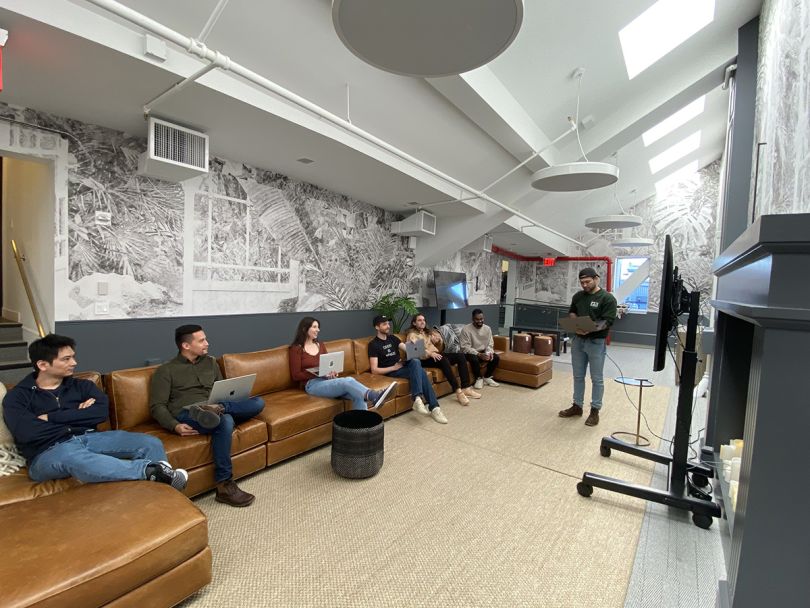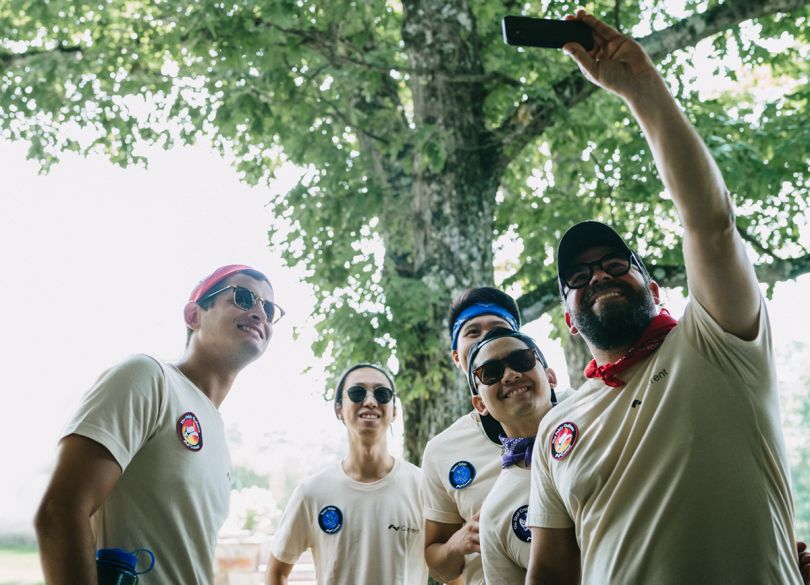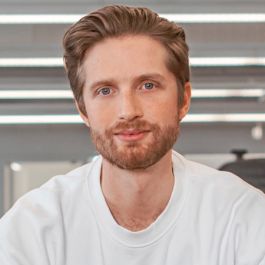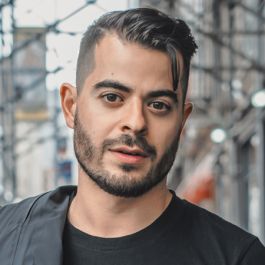Current was born out of what seems like a simple question: “What is the future of banking?”
Founder Stuart Sopp and Chief Technology Officer Trevor Marshall believe the industry is moving toward decentralized finance, or DeFi, which uses smart contracts built on blockchain technology. This approach offers users direct access to, and ownership of, funds with the goal of dispersing power and risk.
While newfangled technology can blow up industries overnight, it’s not so simple in the world of finance. Because it’s acting upon a complex system deeply rooted in our personal lives, fintech must be grounded in the present reality of infrastructure while building toward the future. Cryptocurrency and DeFi are still relatively niche concepts surrounded by technical and educational barriers, and there is a steep curve to adoption for the average American.
THE INTERSECTION OF WEB 3.0 & FINTECH
“Fintech is inherently about understanding how people live their lives. It’s a series of complex transactions threaded into everyday decisions that follow us around, like when we buy a cup of coffee. Some of those decisions become complicated, and they are grounded in the reality of existing infrastructure,” said Vice President of Product Josh Stephens. “When we look at the future, we are figuring out how to push beyond that and understand what is possible.”
This requires the imagination to look at this existing infrastructure and push the limits. For example, in traditional finance, balances are locked in and transactions can take days. At Current, the goal is to be more fluid. “Balance is not something that needs to stay in one place or with a single bank, so we abstracted the idea of balance away from institutions. Balances and transactions can exist across different places, whether it’s buying Bitcoin or getting access to credit,” said Marshall.
Hybrid finance, or HyFi, has popped up to facilitate the transition. Users can access decentralized features without the burden of understanding blockchain complexity. Sopp and Marshall started with a crypto vision and reverse engineered a business that builds a bridge to the future. That’s why Current’s proprietary core banking technology is compatible with both traditional and decentralized back ends, and it’s also a cost-saving differentiator for the company. Building such products in house helps Current stand out from the crowded field of challenger banks using white label core banking systems.
The company’s technology was built on a crypto scaffolding akin to a private blockchain. Current engineers build features natively on top of this infrastructure, using machine learning and other tools. Building these products requires a completely fresh perspective, which is why the company welcomes engineers who don’t have a background in finance. The team encourages curiosity, especially when it comes to Web 3.0 issues, where someone can develop an encyclopedic understanding on one topic but still have an infinite amount left to learn.
“No matter the discipline, everyone we hire is super creative. They should be able to channel that energy to have an impact on our product direction,” said Marshall.
CURRENT QUICK FACTS
- Founded in 2015
- More than $400 million in total funding
- $2.2 billion valuation in April 2021
- More than 3 million customers
- Backed by investments from Andreessen Horowitz, Tiger Global Management, TQ Ventures, Avenir, Sapphire Ventures and more
With years of work behind them, the team at Current has a strong foundation and competitive edge in terms of ushering in the new era of finance. Read on for more insights into the inner workings.

What’s unique about Current?
Marshall: In the beginning, the first problem we wanted to solve was, “What does it mean to have banking without a bank?” In those days we were built on top of Ripple, a cryptocurrency protocol, so we started from the future. As we developed more prototypes we realized that in order to build a good business, we had to keep a grounding in the present while looking toward the future. So it evolved. We’re very connected with reality while looking forward to the future and figuring out how we take people there, and that down-to-earth attitude permeates our entire company culture.
What is the competitive advantage of focusing on the future of finance?
Marshall: There is an alignment around the vision. We built a technology platform that was natively compatible with future technology, unlike others who come from a legacy environment and have to build additional capabilities to make those integrations possible. That alignment allowed us to move a lot faster and have more clarity about the future state.
Stephens: If you are totally reliant on others for your innovation, it’s always going to be very difficult to stand out or do something special for your customer base. We completely own our destiny; we don’t have to rely on anybody else to build a feature or capability. Many fintech firms are in that position because they sit on top of other platforms that do the dirty work of finance. For us, we chose to do that dirty work ourselves and embrace the complexity. We don’t have to wait for someone else. If we want to build crypto trading or a personal loan product, we don’t have to wait for someone else who is possibly providing that service to other companies. It allows us to move faster and differentiate what we are building.
We completely own our destiny; we don’t have to rely on anybody else to build a feature or capability.”
Explain what hybrid finance means, and describe the skills necessary to build a product in that space.
Marshall: Hybrid finance combines the realities of the way money currently works with the opportunities of open platforms. In terms of skills, you need to develop a deep understanding of both worlds. You need to know where you’re coming from and where you are going. However, when people join us, there is an advantage in not having domain expertise, because then we get really fresh perspectives, which is what is required to take on these kinds of problems. To create these solutions you have to think beyond the current capabilities.
Can you give me an example of a problem that stumped you and how you navigated it?
Marshall: Most companies probably think in terms of optimization, tweaking and eking out 2 percent incremental changes. Current is working in binary changes in terms of the outcomes of our product. We saw this most recently with our high-yielding product called “Interest.” We wondered, “How do we protect our customers from inflation, which penalizes people who live paycheck to paycheck or don’t have a lot of assets?” We needed to offer people some protection by giving them a high interest rate on deposits. In traditional banking, those rates aren’t there. The Fed has kept rates low. So there isn’t a traditional way to generate those returns. We tapped into some of our decentralized finance work and created our own treasury function, so we are able to generate those returns and give them back to customers. This is one of the areas where you can’t accept the traditional path with marginal improvements. We start out with the assumption we can do it and figure out how to make it true.
We start out with the assumption we can do it and figure out how to make it true.”
Stephens: That’s a great example that speaks to how we approach everything. When you look at the macro perspective, there is so much to do, and you need to constantly solve problems. As a team we have been getting our heads around more creative ways to solve problems since the beginning. How do you take the traditional method and break it apart? That is important in our way of thinking, to keep the spirit of innovation.
What are you working on right now that might be exciting for product managers and engineers joining the team?
Stephens: Unlike large companies where you are taking a tiny piece of an overall experience, we have a lot of big, interesting problems to sink your teeth into on the product side. We want product managers to go as deep as possible to touch the bottom and really try to understand what is happening. That results in a clear sense of the opportunities and potential strategies. We ask them to be real owners from end to end. It’s moving extraordinarily quickly, but tangibly impacts people’s lives.
Marshall: What is exciting is how much of the platform we have actually built. There is an opportunity to come in and have ownership over features and experiences that affect millions of people. On the very first day as an engineer, you’re able to deploy a service to production. Within six months, you’re in the position of an engineering lead. The way we have our back-end infrastructure set up, you’re getting a broad understanding of how systems work at scale.

What are some of the team- and culture-building activities you engage in?
Marshall: We had a companywide NFT hackathon recently, where people were given the prompt, “What would it mean for NFTs to be integrated with Current?” It was very open-ended. Teams worked together across disciplines, and we had a guest judge from our board join to give feedback. The winners had a great presentation and their idea is something we may implement in our product road map.
Stephens: We’re trying to solve really hard problems, and the most effective way to do that is when we enjoy working with the people around us. It’s easier to find solutions. So we make sure people feel celebrated and like there is something to look forward to. There is an opportunity now to create a connection with folks in the office, which improves the ability to come up with creative solutions.
CULTURE BUILDING AT CURRENT
- Hackathons
- Open-forum Slack culture
- Monthly all-hands meetings
- Monthly demo days
- Weekly happy hours
- Social events such as wine tastings, yoga and charcuterie nights
Current has had very little turnover. What keeps people there?
Stephens: Working with smart people matters more than anything, and working in a space where there is room to maneuver is important. You need to figure out what is going to work and what isn’t, and you need smart people to get there.
Marshall: Aligning with champions is the most important thing you can do for your career. We have aligned around the idea that money is changing. What keeps people here is realizing that what they are doing is important. They can see the benefits of their impact. While structured feedback is a common feature at many companies, here you can see the output and see the purpose of your work every day. You are constantly getting feedback.
How do you preserve that kind of impact as you grow?
Marshall: We are three or four times bigger than we were before the pandemic. We put structures in place to preserve that impact. We don’t want to be a massive company. We want to stay as lean as possible; we just want to bring people on to expand what we can do. We structure our product and engineering teams around shared initiatives. They are cross-functional. They are designed to be split into smaller pods as the team grows so that employees are working in groups of 10 to 15 people. In those smaller settings you can see your impact. There is still transparency in the work.
What excites you the most about this work and the future of the industry?
Stephens: Our mission is to change our members’ lives by creating better financial outcomes through inspirational and motivational financial products. We have the ability to overcome challenges to give value back to customers. When I look to the future, I see all of this never-ending opportunity. That is extraordinarily powerful.
Marshall: One thing that is extremely gratifying is passing the torch. As a smaller team, we’ve worn so many hats, and it’s nice to see some of those hats being worn by other people and honestly, looking way better while doing it.







